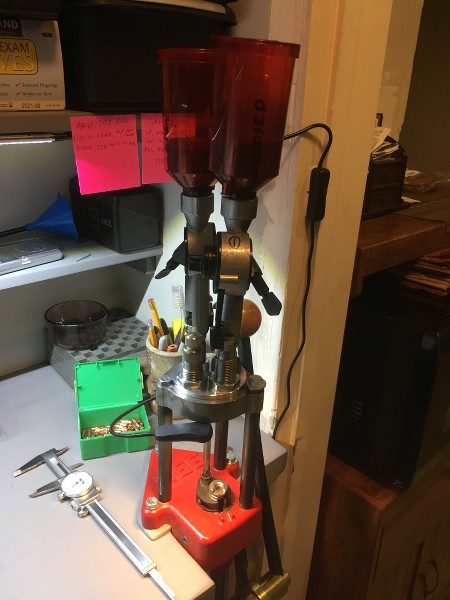Final thoughts . . .
Zeke and all:
I now think I understand set back. The loads in question had about 1/2 a crimp (Meaning I set the crimp die half a twist after it touched the case) so I don't think they could have "setback" but it's clearly possible.
I dismantled the gun again and measured the barrel. I appears to be about two hundreds of an inch wider at the muzzle than it is at the end of the chamber. I'm guessing it's always been that way. Reassembled the gun and ran some light reloads through the gun and it all ran fine.
Oh, and I should note that the grips are now cracked, but not broken. I noticed that on the first dismantle.
I'm think this was an overcharge, but may have not been a full double charge. Given the turret press and the Lee auto drum powder measure it's possible to get a partial charge with a partial pull on the press lever. Meaning I charged the case and then got sloppy with another partial pull.
As I scoured my memory, I have a vague recollection of sitting down to pick up where I left off, weighting the powder throw, and coming up with 5.8 instead of 5.2. IF my memory is correct, this would mean that during of my previous loading session I'd loaded multiple bullets with 5.8. (Duh, that should have occurred to me a the time, so maybe my memory is faulty.) However I took all of those apart and weighed the powder, as noted above. Most I got was 5.4 and there were only two of those. Hmmmmmm . . .
In the final analysis, I got lucky that it wasn't worse. I've learned a lot and have reviewed and renewed my safety measures. So . . . carry on.
Life is good.
Prof Young




